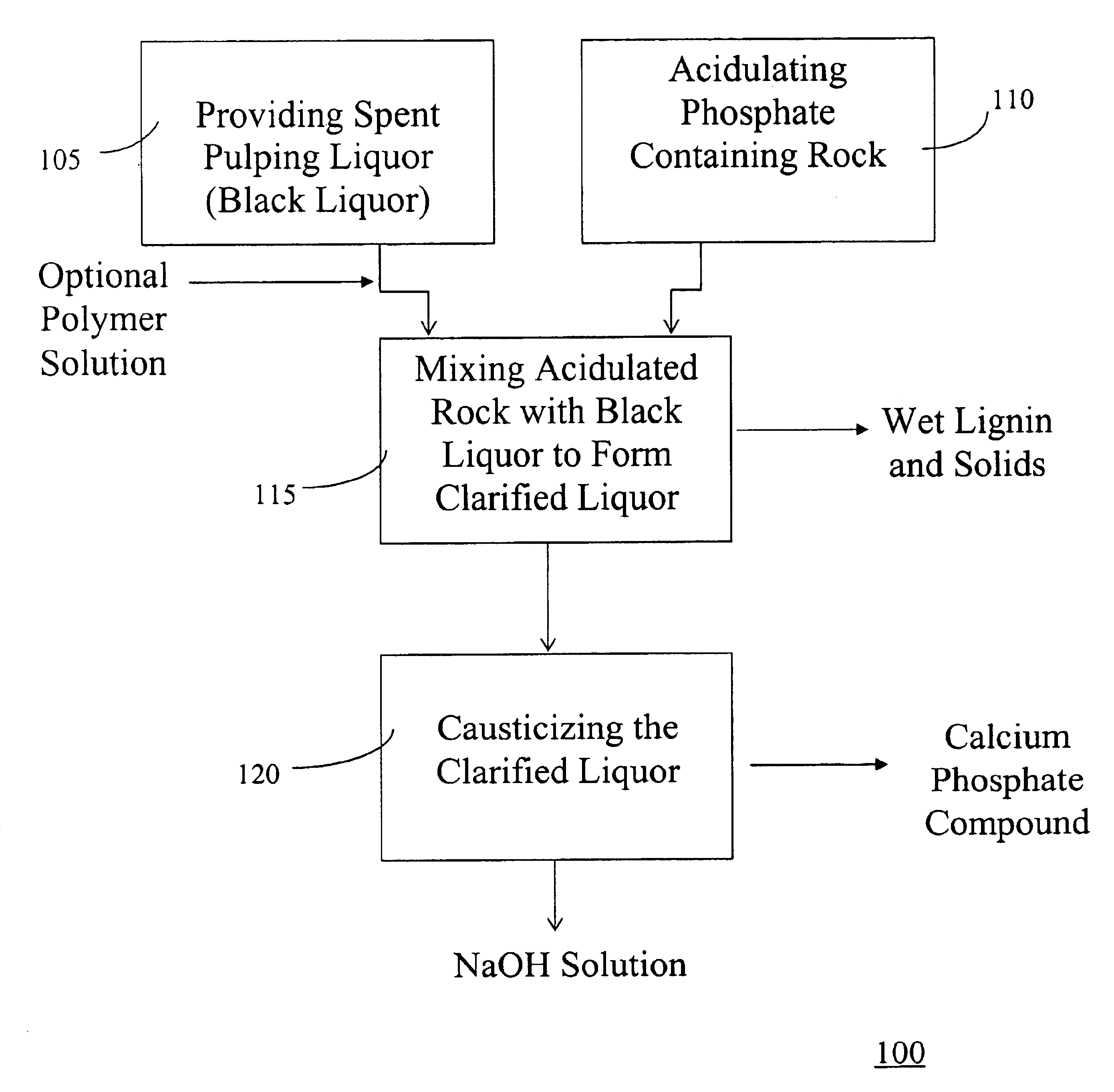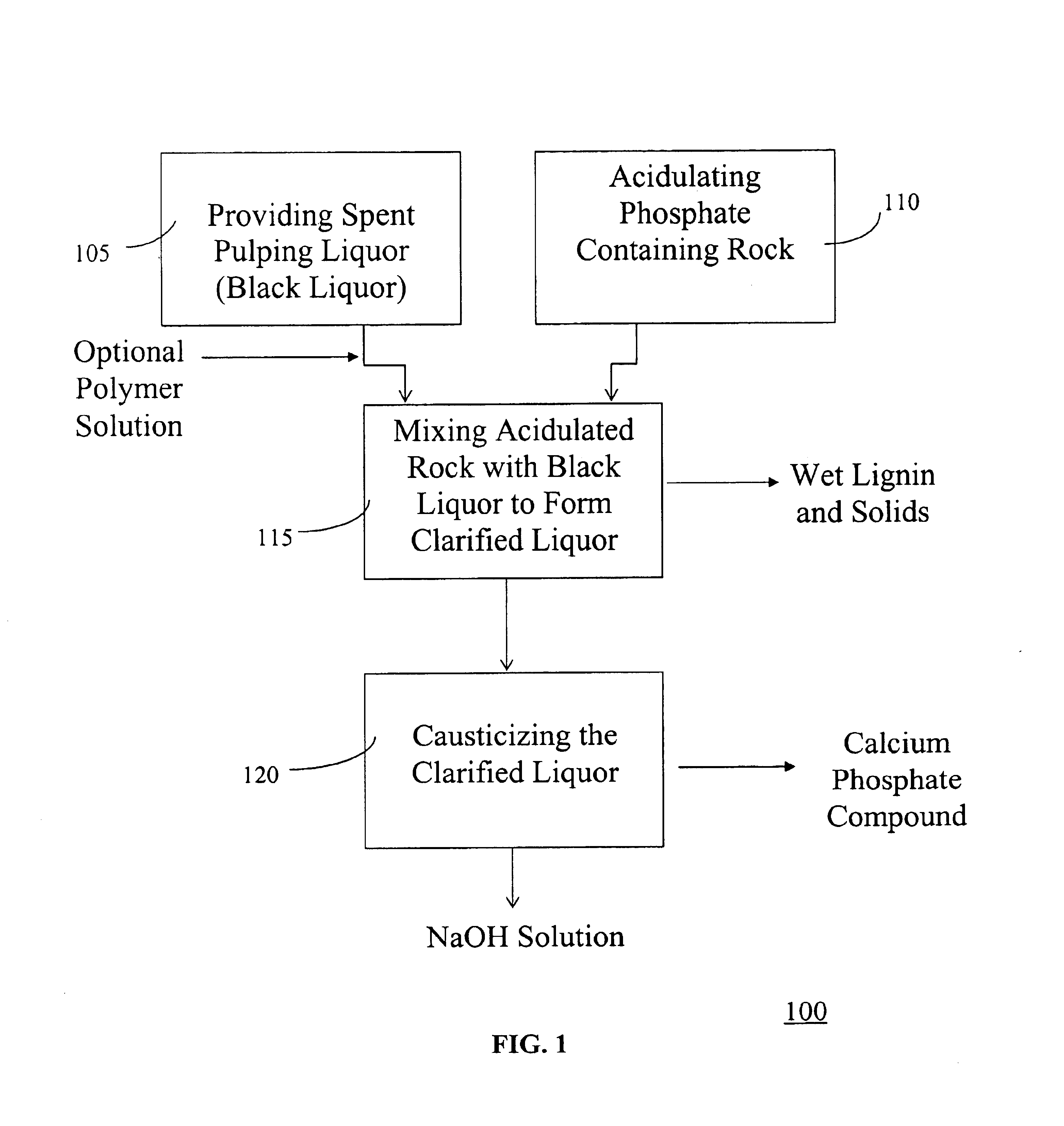Treatment of spent pulping liquor with lignin separation to recover alkali pulping chemicals in manufacture of paper pulp
a technology of alkali pulping chemicals and lignin separation, which is applied in the direction of pulp liquor regeneration, multi-stage water/sewage treatment, separation processes, etc., can solve the problems that the recovery of sodium hydroxide from sodium sulfate is not possible using the currently available cost effective methods, and achieves the recovery of white liquor, lower phosphate content of white liquor, and higher conversion level
- Summary
- Abstract
- Description
- Claims
- Application Information
AI Technical Summary
Benefits of technology
Problems solved by technology
Method used
Image
Examples
example 1
In this Example, the polymeric, coagulant agent solution was first added to the black liquor. As noted above, sulfuric acid was reacted with phosphate containing rock before addition to the polymer intermixed with the black liquor. Below are the results obtained from the chemical analysis performed. The spent liquor shows lower concentrations as compared to the black liquor due to dilution by water and polymer solution.
example 2
In this Example, the polymeric, coagulant agent solution was again first added to the black liquor as described above. As noted above, sulfuric acid and phosphate rock were added simultaneously to the polymer intermixed with the black liquor. A chemical analysis of black liquor, and other streams after lignin separation using the invention provided the following results:
Both Examples described above included a separation process including a water soluble, surface active, polymeric, coagulant agent first added to the black liquor prior to phosphoric acid treatment. However, as noted above, when the phosphate contain material is high surface phosphate rock, the rock may provide sufficient nucleation so that the efficient separation processing can proceed without the addition of the polymeric, coagulant agent.
PUM
| Property | Measurement | Unit |
|---|---|---|
| pH | aaaaa | aaaaa |
| water soluble | aaaaa | aaaaa |
| surface active | aaaaa | aaaaa |
Abstract
Description
Claims
Application Information
 Login to View More
Login to View More - R&D
- Intellectual Property
- Life Sciences
- Materials
- Tech Scout
- Unparalleled Data Quality
- Higher Quality Content
- 60% Fewer Hallucinations
Browse by: Latest US Patents, China's latest patents, Technical Efficacy Thesaurus, Application Domain, Technology Topic, Popular Technical Reports.
© 2025 PatSnap. All rights reserved.Legal|Privacy policy|Modern Slavery Act Transparency Statement|Sitemap|About US| Contact US: help@patsnap.com


